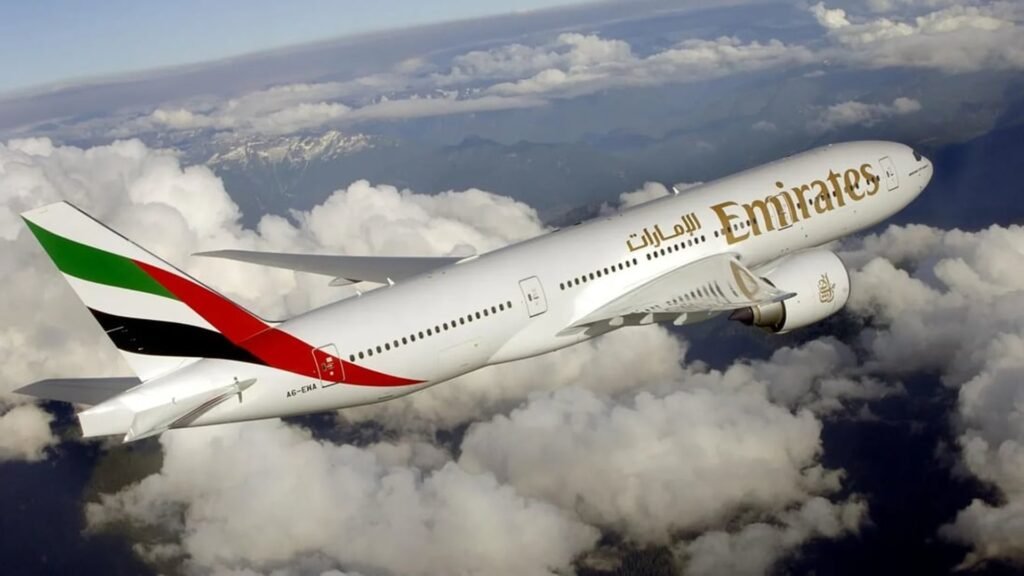Emirates success is a remarkable story of ambition, innovation, and strategic brilliance. From its humble beginnings in 1985 with just two leased aircraft, Emirates has grown into a global aviation powerhouse, consistently ranking as the world’s most profitable airline. How did a small airline from Dubai transform into a symbol of luxury and efficiency? This article explores the key factors behind Emirates’ meteoric rise, offering insights into its business strategies, customer-focused innovations, and ability to navigate challenges.
A Modest Start with Big Dreams
Emirates began operations in October 1985, launched by the Dubai government with a modest fleet of two planes—a Boeing 737 and an Airbus A300. The airline’s goal was bold: to connect Dubai to the world and establish it as a global hub. Unlike many established carriers, Emirates faced skepticism due to its small size and the competitive aviation industry. However, under the leadership of Sheikh Ahmed bin Saeed Al Maktoum, the airline adopted a vision of excellence that set it apart.
The early years were challenging. Emirates competed with legacy carriers like British Airways and Gulf Air, which had larger fleets and established routes. Yet, the airline’s focus on quality service, competitive pricing, and strategic route planning laid the foundation for its growth. By targeting underserved markets and offering superior customer experiences, Emirates quickly gained a loyal customer base.

Building a World-Class Fleet
One of the pillars of Emirates’ success is its investment in a modern, efficient fleet. The airline operates one of the youngest fleets in the industry, with an average aircraft age of under seven years. This commitment to cutting-edge technology has allowed Emirates to reduce fuel costs, improve reliability, and enhance passenger comfort.
- Strategic Aircraft Choices: Emirates was an early adopter of wide-body aircraft like the Boeing 777 and Airbus A380, enabling long-haul flights with greater capacity.
- Fuel Efficiency: Modern planes like the A380 consume less fuel per passenger, boosting profitability.
- Luxury Appeal: The A380’s onboard features, such as private suites and shower spas, redefined luxury travel.
By prioritizing fleet modernization, Emirates not only lowered operational costs but also attracted high-paying customers seeking premium experiences. This balance of efficiency and luxury became a hallmark of the airline’s brand.
Dubai: The Global Aviation Hub

Emirates’ success is closely tied to Dubai’s transformation into a global aviation hub. The airline capitalized on Dubai’s geographic advantage—located at the crossroads of Europe, Asia, and Africa—to connect passengers across six continents. Dubai International Airport (DXB) has grown alongside Emirates, becoming one of the busiest airports in the world.
The airline’s hub-and-spoke model allows passengers to transfer seamlessly between flights, making Dubai a convenient stopover for long-haul journeys. Emirates also worked closely with the Dubai government to develop world-class infrastructure, including Terminal 3, dedicated exclusively to Emirates’ operations. This synergy between the airline and its home city has been a key driver of its profitability.
Customer Experience: Redefining Luxury
Emirates’ success is not just about numbers; it’s about creating memorable experiences. The airline has set the gold standard for in-flight service, from its award-winning entertainment system to its gourmet dining options. Key elements include:
- ICE Entertainment System: Offering over 4,500 channels of movies, TV shows, and music, Emirates’ in-flight entertainment keeps passengers engaged.
- Premium Cabins: First-class suites and business-class seats with lie-flat beds cater to high-end travelers.
- Multicultural Crew: With staff from over 130 countries, Emirates ensures passengers feel at home, regardless of their origin.
By focusing on customer satisfaction, Emirates has built a loyal following, with many travelers choosing the airline for its unmatched comfort and service.
Strategic Partnerships and Sponsorships
It has mastered the art of brand visibility through strategic partnerships and sponsorships. The airline’s logo is synonymous with global events and sports, from sponsoring major football clubs like Arsenal and Real Madrid to events like the Dubai World Cup and Australian Open. These partnerships have boosted Emirates’ global recognition and attracted a diverse customer base.
Additionally, Emirates’ loyalty program, Skywards, has been a game-changer. With millions of members worldwide, Skywards rewards frequent flyers with miles that can be redeemed for flights, upgrades, and partner services. This program has strengthened customer retention and driven repeat business.
Navigating Challenges with Agility
The aviation industry is no stranger to challenges, from economic downturns to global crises. Their’ success lies in its ability to adapt and innovate during tough times. For instance, during the 2008 financial crisis, Emirates maintained profitability by optimizing routes and cutting operational costs without compromising service quality.
The COVID-19 pandemic posed an unprecedented challenge, grounding flights worldwide. They responded swiftly by:
- Retrofitting Aircraft: Adding premium economy cabins to attract a new segment of travelers.
- Health and Safety Measures: Implementing rigorous safety protocols to rebuild passenger confidence.
- Cargo Operations: Expanding its cargo division to transport essential goods, offsetting passenger revenue losses.
Innovation and Sustainability
Emirates has embraced innovation to stay ahead of the competition. The airline invests heavily in technology, from biometric check-ins to AI-driven customer service tools. These advancements streamline operations and enhance the passenger experience.
Sustainability is another focus area. Emirates has committed to reducing its carbon footprint through:
- Sustainable Aviation Fuel (SAF): Partnering with suppliers to incorporate SAF on select routes.
- Efficient Operations: Optimizing flight paths to reduce fuel consumption.
- Waste Reduction: Implementing recycling programs and reducing single-use plastics onboard.
By aligning with global sustainability goals, they appeals to environmentally conscious travelers while ensuring long-term viability.
Lessons from Emirates’ Success

Their journey from an underdog to the world’s most profitable airline offers valuable lessons for businesses worldwide:
- Invest in Quality: Prioritizing customer experience drives loyalty and revenue.
- Adapt to Change: Flexibility in the face of challenges ensures long-term success.
- Leverage Strategic Location: Emirates turned Dubai’s geography into a competitive advantage.
- Embrace Innovation: Staying ahead with technology and sustainability keeps businesses relevant.
Their success is a testament to visionary leadership, bold investments, and an unwavering focus on excellence. As the airline continues to expand its global footprint, it remains a shining example of how determination and strategy can transform an underdog into an industry leader.
Looking Ahead
They shows no signs of slowing down. With plans to expand its fleet, explore new routes, and enhance its digital offerings, the airline is poised to maintain its position as the world’s most profitable airline. Its commitment to innovation, sustainability, and customer satisfaction ensures it will continue to soar to new heights.
In conclusion, Emirates’ success is not just about flying planes—it’s about creating a global brand that inspires trust and admiration. From its modest beginnings to its current dominance, Emirates’ story is one of resilience, ambition, and unparalleled achievement.
Read More: Power Move: UAE to Boost US Energy Investments to $440 Billion by 2035













